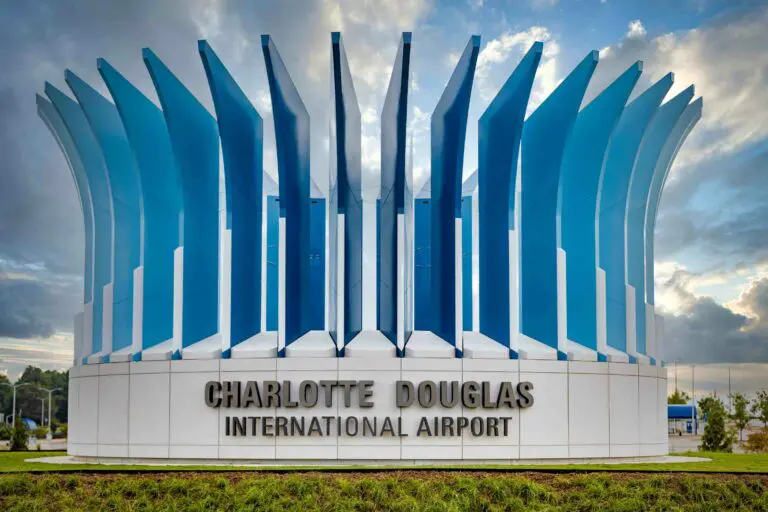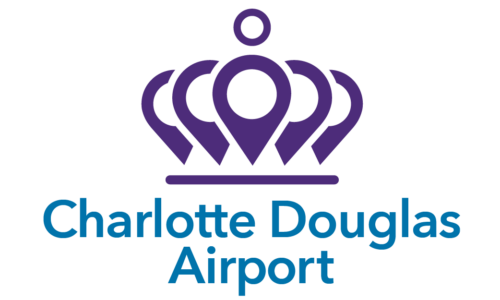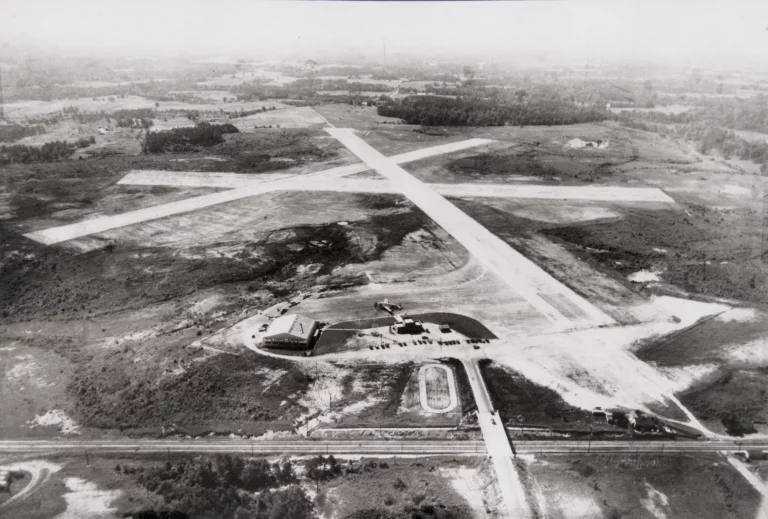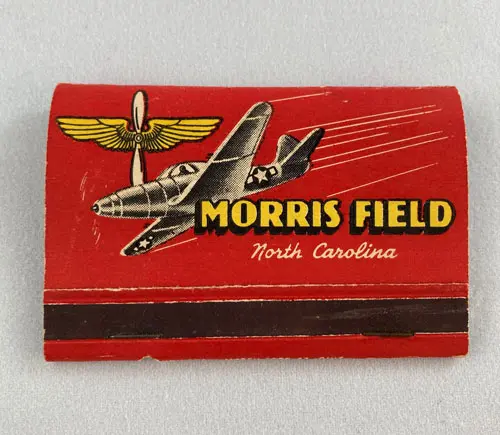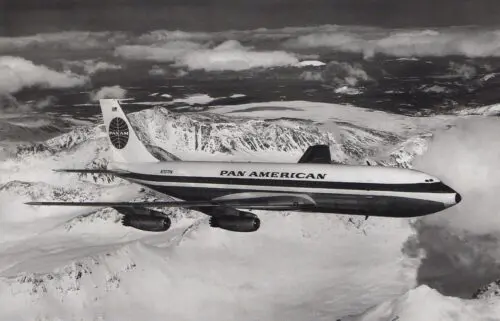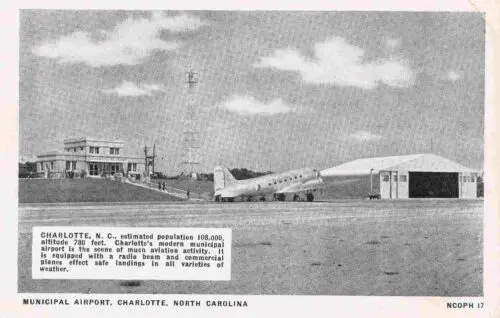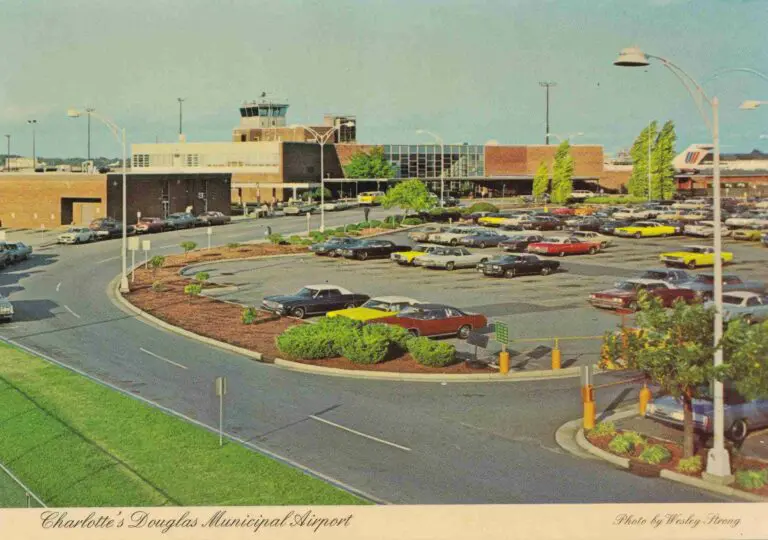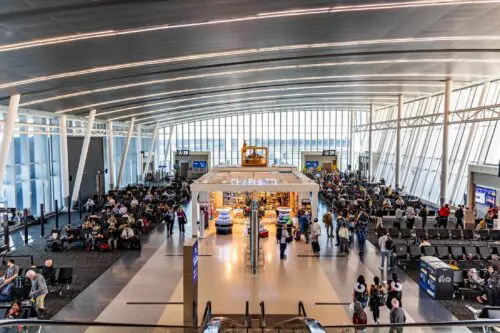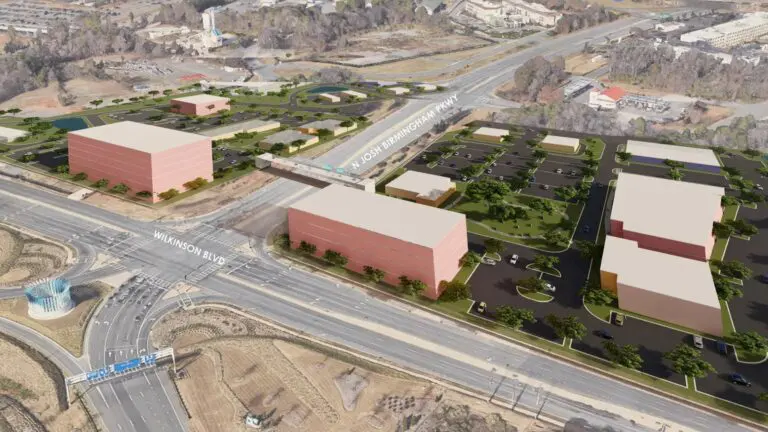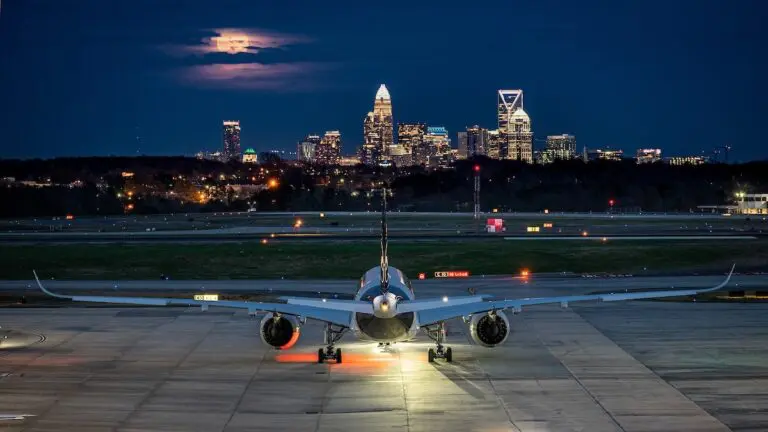Charlotte Douglas International Airport is one of the world’s busiest airports, with passenger counts reaching as high as 53,445,770 in 2023. But how did the airport grow to be this way? Why is having such a large airport important for Charlotte as a growing global New South city?
The Charlotte Douglas International Airport started as Charlotte Municipal Airport, owned and operated by the City of Charlotte. Works Progress Administration (WPA) funding made this project possible. The WPA was a New Deal work-relief program designed to fund projects and create jobs for unemployed Americans.
The Charlotte Municipal Airport, at the time of its creation, was North Carolina’s largest WPA project. The WPA contributed $323,889.47, and the City of Charlotte contributed $57,703.38. The airport formally opened on May 17, 1937, with three runways, a hangar, and one terminal building. Of those original buildings, only the hangar is still standing. The first commercial flight occurred that same year. Eastern Air Lines was the main airline, operating two commercial passenger flights daily. Most of the airports at that time were built for military use, making the Charlotte Municipal Airport unusual in its origin.
It wasn’t until 1941, during the Second World War when the US Army Air Corps took control of the airport, that it was used for any war effort. Charlotte leased the airport to the War Department for an indefinite time. Between January and April of 1941, the Army Air Corps oversaw the airport’s construction, renaming it the Charlotte Army Air Base. On April 21, 1941, the airport was renamed Douglas Municipal Airport after Mayor Ben Elbert Douglas, Sr.
The Army bought additional land, lengthened and widened the runways, and built a large-scale hangar repair facility, a hospital, shops, barracks, reservoirs, and ninety other structures. The Army invested nearly $6 million in the site. After the bombing of Pearl Harbor, the property was renamed Morris Field in honor of William Morris, a Harrisburg native who was a World War I flier and instructor.
During World War II, Morris Field was mainly used to train base pilots, gunners, and maintenance crews. In 1946, the airport was returned to the city. The years after World War II were prosperous, and the airport began to expand its infrastructure.
The aviation industry boomed as the world entered the Jet Age in the mid-1950s. The jet engine revolutionized air travel, enabling airlines to build larger, faster, and more productive aircrafts. Jet technology also allows airlines to reduce their operating costs and airfares. Flying was now more affordable, meaning airports like the Charlotte Municipal Airport had to grow. In 1954, a large two-story passenger terminal was built to accommodate more passengers. Eastern Air Lines continued to be the main airline to operate at the airport throughout the 1950s and 60s.
In 1978, when the aviation industry deregulated, many airlines began to expand their services regionally on new routes. This caused an increase in passenger travel at Douglas Airport. In 1979, Piedmont Airlines chose the airport as its new hub. New routes were added, and the City, along with several airlines, including Piedmont Airlines, funded the construction of a new terminal building. In 1982, the airport was renamed Charlotte Douglas International.
Piedmont Airlines continued to grow. They began running nonstop flights to the US West Coast in 1984. Before 1984, most flights from Charlotte were regional. Piedmont began international flights in 1987. When Piedmont was acquired in 1989, Charlotte remained a major hub by introducing more transatlantic flights.
The airport itself expanded as new concourses were added to accommodate increasing passenger travel: one international concourse in the 1990s and a larger regional concourse in 2002. From 2007 to 2015, the airport added a new cargo facility, a third runway, and new roadways.
Charlotte Douglas International Airport has grown massively over the years. It had a record-breaking year in 2023 with a passenger count of 53,445,770. In 2022, the Airport Council International (ACI) ranked Charlotte’s airport as the seventh busiest worldwide for arrivals and departures. In 2021, it was ranked fifth worldwide for arrivals and departures. In the United States, Charlotte Douglas International Airport is currently rated as the overall tenth busiest airport, determined primarily by the combination of passenger volume and aircraft movements (takeoffs and landings).
Due to its foot traffic and size Charlotte Douglas International Airport contributed $32 billion to the state’s economy which is 5% of the state’s GDP, supported over 150,000 jobs, and has generated $9.9 billion in personal income in 2021. Charlotte alone comprises 46% of airport jobs and 43% of personal income related to North Carolina’s 72 airports.
In late 19th century, New South cities were focused on modernizing their economies and moving away from agrarianism and the Old South after the Civil War. Transportation was a significant factor in modernization, allowing people, products, and ideas to travel more quickly and conveniently. Railroads were the dominant form of transportation at the time, and any New South city needed railroad stations.
As time went on, a new form of transportation emerged: air travel. Air travel became more prevalent, and many New South Cities, like Charlotte, Richmond, Virginia, New Orleans, Louisiana, and Nashville, Tennessee, built airports. Today, the mark of a global New South city is an international airport like Charlotte Douglas International Airport. Airports facilitate business regionally, nationally, and internationally. They create pathways for immigration and tourism. At busy hubs like Charlotte, travelers get a first impression of the city as they are passing through. A large airport makes Charlotte a more attractive place for job seekers to move to.
The airport continues to grow steadily. Airport officials have released plans for Destination CLT a massive $3.5 billion investment project that spans everything from the runway to the terminal to the lobby. CCLT Destination District a separate project is already underway, it is to be the new “front door” for the airport. The CLT Destination District project will develop roughly 90 acres of land along North Josh Birmingham Parkway and Stafford Drive near the airport entrance off Wilkinson Boulevard. The 90 acres of land will be divided into two categories: Destination District Central and Destination District East.
Destination District Central will consist of 39 acres of hotels, restaurants, and shops. Destination District East will consist of 51 acres and be used for distribution and manufacturing centers. The district would have two hotels, nine food and beverage establishments, a brewery, a gas station, a pharmacy, convenience service retail, a medical space, and a LYNX Silver Line station. Charlotte Douglas International Airport has grown from a small regional airport to an international juggernaut.


